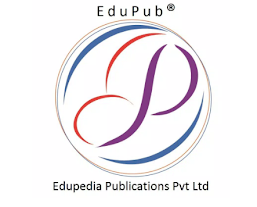by Dr. Poonam Gupta (Author)
Throughout our long history there has been concern for the environment and belief in the close inter-relation between all species and between them and earth and their origin. One of the important reasons of environment problems is the ability that man has acquired to control nature and exploit natural resources. Human history went through three phases. In the first phase, man was a slave to the environment like other species. In the second phase, he learnt to control it but whatever he did to the environment was taken care of by the regenerative capacity of nature. In the third phase the meddling with nature became too much. Man began to exploit nature beyond its regenerative capacity. This occurred because of the increasing knowledge that man acquired and led to the establishment of chemical industry, mining and the radioactive pollution.
In the past, waste water contained organisms derived from faeces, urine, food products, detergents and cellulose. Bacteria, viruses and other pathogenic organisms are normal inhabitants of intestine. Hence these are found in large number in the domestic waste water. But the waste water today contains a large number of chemicals depending on the source of water stream.
India is tremendously bestowed by nature with 4,667 Km. long coastline, 27,360 Km. river channels with tributaries and about 1,12,650 Km irrigation canals and channels (Wealth of India, 1962). The inland river are the major supplier of water for irrigation and fish catch. The man has started exploiting these water resources and they are made the most sought after reservoir of the sewage and industrial waste.
The effluents that are discharged into these waters are those of textiles, sugar distilleries, paper pulp and tanning industries. Out of these pollutants, metals forms a large part. These metals after uptake, concentration and retention may accumulate in fish and affect its well being and finally create a potential hazard when the fish is consumed by man. Metals may be taken up directly by the fish itself or through various parts of its food chain. The concern is primarily with the effect of chronic exposure of contaminants on the well being of the fish and the concentration of the contaminant in the edible portion of the fish so as to effect the wholesomeness of the fish for consumption as food.
The present study deals with the toxic effects of Bismark brown and Metanil yellow on two fresh water teleosts. Bismark brown ( 2, 4 diamino 3” amino azo benzene ) is a permitted dye and is liberally used to dye cotton and silk fibres and finally drained out into the inland waters, as residual waste. Metanil yellow , an acid dye of monoazo series, finds wide application in industries such as those of dyeing cotton, wool, paper, soap, spirit , liquors, wax, polish and a number of cosmatics. It is also used to colour a wide variety of foodstuffs as well. Metanil yellow ( 4” Aniline azobenzene – m – sulfonic acid ) has been shown to cause degenerative effects in the testes of rats ( Singh and Khanna 1972 ). The toxicity of Bismark brown and Metanil yellow is yet to be explored in case of fish species. The present study deals with the toxicity of both the dyes Bismark brown and Metanil yellow on the blood of two fresh water fish Colisa fasciatus and Labeo rohita. Both the fishes have high economic importance and are available round the year in fresh water ponds and rivers of Rohilkhand region.






















